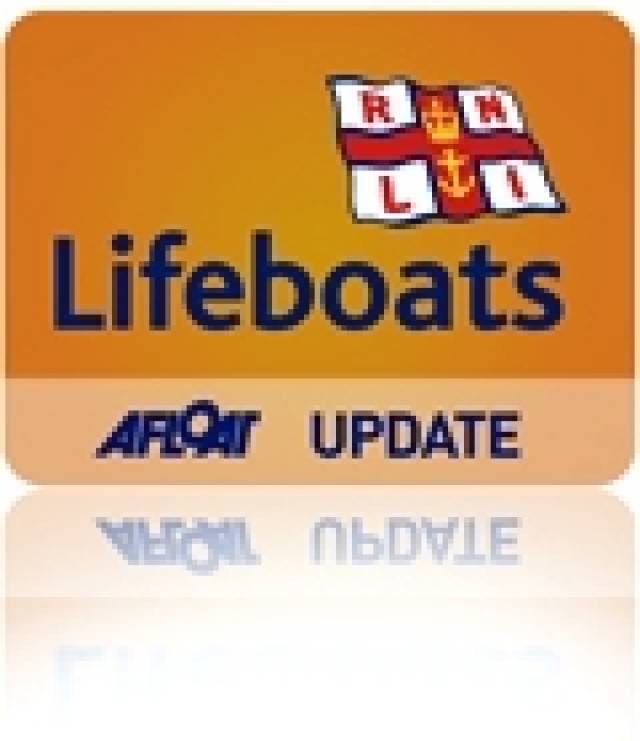#RNLI - Wicklow RNLI rescued a male swimmer who got into difficulty yesterday afternoon (Thursday 4 September).
The rescue followed a request from the Irish Coast Guard for the volunteer lifeboat crew to search for a missing swimmer at Silver Strand beach.
The alarm was raised by the swimmer’s wife who was concerned for his safety and by members of the public who heard his call for help.
The all-weather lifeboat had already launched at 2.30pm and was on her way to meet and escort a former visiting lifeboat into the harbour when it was requested.
The lifeboat diverted immediately and proceeded south towards Wicklow Head to begin a search. The inshore lifeboat also launched to assist. Weather conditions and visibility in the area were good at the time.
During the search, a person was spotted in the water about one mile offshore near Brides head.
The all-weather lifeboat, under the command of second coxswain Ciaran Doyle, was quickly alongside the casualty. Crewmember Matt Doyle took him from the water using a scramble net.
First aid was administered to the exhausted man by Carol Flahive as the lifeboat made its way back to Wicklow Harbour.
The lifeboat was met on arrival at the East Pier by a waiting ambulance, where the swimmer was treated by paramedics. He did not need to be hospitalised.
It was quickly established that the man had been swimming off Silver Strand when he was carried quite a distance north with the tide and strong currents, which prevented him getting ashore.
At Wicklow Head, he was swept further out to sea. That's when members of the public on the cliff contacted the coastguard after hearing his call for help.
Speaking after the callout, Wicklow RNLI lifeboat operations manager Des Davitt said: "The swimmer was extremely lucky today to be spotted so quickly by the crew and thankfully a tragic outcome was avoided."
































































